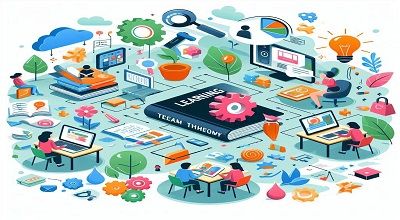Learning Modalities in Teaching
Today we are here to discuss Learning Modalities in Teaching & their importance. Learning modalities, also known as learning styles, refer to the ways in which individuals prefer to approach learning and processing information. People have diverse learning preferences, and understanding these modalities can be crucial for educators to design effective teaching strategies that cater to the varied needs of students. The most common learning modalities are visual, auditory, and kinesthetic/tactile. Here’s a brief overview of each:
Visual Learners
- Characteristics: Visual learners prefer to see information through images, charts, graphs, and other visual aids.
- Teaching Strategies: Teachers can use visual aids, diagrams, videos, and presentations to enhance the learning experience for visual learners.
Auditory Learners
- Characteristics: Auditory learners learn best through listening and discussing information. They often benefit from lectures, discussions, and audio materials.
- Teaching Strategies: Incorporating verbal explanations, and discussions, and providing opportunities for students to express themselves verbally can be effective for auditory learners.
Kinesthetic/Tactile Learners
- Characteristics: Kinesthetic learners learn best through hands-on activities, movement, and physical experiences.
- Teaching Strategies: Incorporating interactive activities, experiments, and real-world applications can engage kinesthetic learners. Hands-on projects and group activities can also be beneficial.
Importance of Addressing Learning Modalities
- Individualized Learning: Recognizing and accommodating various learning modalities allow educators to provide a more individualized learning experience for each student. This can enhance understanding and retention of information.
- Increased Engagement: Tailoring teaching methods to different learning styles can increase student engagement. When students are actively involved in learning in a way that suits their preferences, they are more likely to stay focused and interested.
- Improved Retention: Learning modalities can impact the retention of information. When students are taught in a way that aligns with their preferred modality, they are more likely to retain and recall the information.
- Enhanced Problem-Solving Skills: Exposure to diverse teaching methods can help students develop a range of problem-solving skills. By engaging with information in different ways, students can learn to approach challenges from various perspectives.
- Catering to Diversity: Students in any given classroom come from diverse backgrounds with different learning preferences. Acknowledging and addressing these differences can create a more inclusive learning environment.
- Building Confidence: When students are taught in a way that aligns with their strengths, they may experience increased confidence in their ability to learn and succeed academically.
- Preparation for Real-World Challenges: In the real world, individuals often encounter information in various formats. By exposing students to different learning modalities, educators prepare them to adapt to diverse learning and working environments.
Summary
In summary, understanding and incorporating learning modalities in teaching is essential for creating a well-rounded and effective educational experience that caters to the diverse needs of students.
